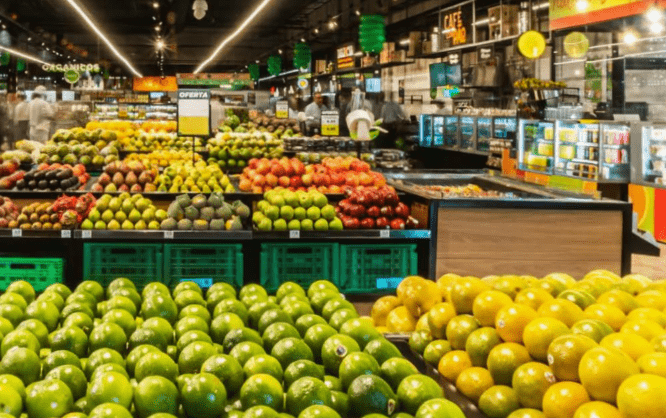According to the Brazilian Association of Supermarkets (ABRAS), the Brazilian food retail industry accounted for approximately 7.03% of Brazil‘s GDP in 2022.
Previously, the Brazilian food retail industry had gross revenues of approximately R$611 billion in 2021, 10.3% higher compared to approximately R$554 billion in 2020.
Companhia Brasileira de Distribuição refers that the Brazilian food retail industry is highly fragmented.
In particular, the 10 largest supermarket chains that disclosed their revenues to ABRAS accounted for approximately 37.2% of the food retail industry in 2021, compared to 37.5% in 2020 and 35.0% in 2019.
According to data released by the Brazilian Institute of Geography and Statistics (IBGE), sales volume in the food retail sector increased 1% in 2022 over 2021.
A binding fact: Brazil’s total population was approximately 215 million on December 31, 2022, representing a growth of 1.2% year-on-year.
Given that approximately 85% of the population lives in urban areas (where most of Companhia Brasileira de Distribuição’s operations are located) and the urban population has increased at a faster rate than the population as a whole, this company’s business is particularly well positioned to benefit from Brazil’s urban growth and the economies of scale associated with urban growth.
Brazilian food industry
According to an IBGE survey, in 2022, the city of São Paulo had an estimated population of 12 million and the city of Rio de Janeiro had an estimated population of 7 million. They are the two largest cities in Brazil.
The state of São Paulo has a total estimated population of 46 million, representing 21% of the Brazilian population and is Companhia Brasileira de Distribuição’s largest consumer market in Brazil, with 592 stores as of December 31, 2022.
The state of Rio de Janeiro is its second largest consumer market, with 66 stores as of December 31, 2022.
Brazil’s GDP increased 2.9% in 2022 compared to 2021, while household consumer spending advanced 4.3% relative to 2021, mainly due to purchases of goods and services, driven by the easing of restrictions related to the Covid-19 pandemic.

